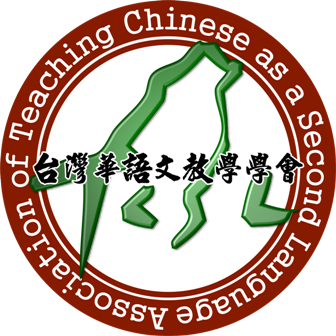目錄
Table of Contents
- 臺灣華語教師之教學環境及滿意度調查:十年來之變化發展分析 信世昌、李希奇、方淑華、李郡庭、林姵君
A Survey on the Teaching Environment and Satisfaction for L2 Chinese Teachers in Taiwan: A Developmental Analysis of Changes during the First Decade of 21st Century by Shih-Chang Hsin, Hsi-Chi Lee, Shu-Hua Fang, Chun-Ting Lee, and Pei-Jun Lin
- 摘要
本研究為一項跨越十年的調查,旨在透過問卷調查瞭解臺灣華語教師之工作狀況及其對華語教學環境的看法及滿意度。研究針對臺灣各大學及民間華語中心教師為對象,分別在2000年、2005年及2010年進行了三次形式相同的問卷調查,其間各相隔五年,以比較其異同及變化趨向,並藉以記錄二十一世紀初期臺灣華語教師的情況。調查結果發現,華語教師之學歷及專業背景都持續成長。無論是自身待遇及工作環境等各方面,華語教師之滿意程度幾乎都以2005年為最高,明顯高於2000年的調查結果。但到了2010年卻呈現不進反退的情形,大多數項目的滿意度均呈下降趨勢。顯示近五年來華語教學環境並沒有進步,這是一個值得注意探究的議題。
This study consists of a survey that was performed over ten years, between 2000 and 2010. It aims to present concrete data regarding Chinese teachers’ views on and satisfaction with Taiwan’s Chinese teaching environment at university language training centers and private language schools. Three questionnaire surveys were conducted in 2000, 2005 and 2010. The purpose of these surveys is to compare changes in the teaching environment over time and provide a record of Taiwan’s Chinese as a second language teachers’ situation at the beginning of the 21st century.The results show that these Chinese teachers were most satisfied with the various aspect of their working environment in 2005, but their satisfaction rate showed a general decrease in 2010. This indicates that the working environment in Taiwan’s Chinese language centers has made little progress during the last 5 years. This problem is worthy of further study and is in need of improvement.
- 句型操練和體演文化 廖灝翔
Drill Practice and Performed Culture Approach by Hao-Hsiang Liao
- 摘要
「句型操練」(Drill)和「體演文化」(Performed Culture Approach)是當前美國對外漢語教學課堂常見的兩種教學法。句型操練透過節奏和糾錯,讓學生在課堂裏得到大量的聽說練習。句型操練課「準確」和「流利」並重,前者指的是學生的語音、聲調及語法,而流利則是建立在準確的基礎上,學生不可因求快而犧牲發音,錯置聲調,語法紊亂。體演文化同樣也是「準確」和「流利」並重,但其更強調學生說話應對在中國文化中交際情況的得體性(cultural appropriateness)。換句話說,除了語法、聲調和語音外,學生必須知道在什麼場合該說什麼話、不該說什麼話,才顯得有教養、具文化,而不至擦槍走火,冒犯到中國人。本文裹,筆者將以個人的經驗,探討這兩種教學法的異同,並提供兩個教案,示範備課時的重點,希望藉此拋磚引玉,為兩種教學法建立彼此對話的可能性。
This paper investigates the similarities and differences between the Drill Approach and the Performed Culture Approach, two classroom activities widely used in the United States in the field of Teaching Chinese as a Foreign Language. Under the drill approach, the teacher focuses on students’ pronunciation, intonation, tones and use of speech patterns by means of teacher-directed substitution and choral drilling. As a teacher ”conducts” their class, students receive a substantial amount of listening as well as speaking practice, and gradually develop their language fluency. While the Performed Culture Approach also emphasizes students’ accuracy of linguistic forms, it extends its focus to cultural appropriateness. Students of the Performed Culture Approach are expected not only to accurately articulate the target language but also to behave in a culturally appropriate way. In other words, cultural appropriateness is as important as language accuracy. Therefore, the goal of a teacher in a Performed Culture class is to help students develop cultural as well as linguistic situated knowledge, which can help them avoid cultural misunderstandings. It is hoped that by discussing the strengths and weaknesses of each approach, a dialogue between the two can be established.
- Implementing History and Memory in an Advanced Content-Based Chinese Class: What, How and Why in “Chinese History through Cinema and Cross-talk” by Enya Jin-Huei Dai
注入歷史與記憶的新元素-高級漢語《看電影說相聲話中國近代史》 戴金惠
- 摘要
本文旨在探討對外漢語教學注入歷史與記憶的新元素的重要性,並以「看電影聼相聲話中國近代史」為例加以分析討論。筆者針對研究院國際專業的學生採認知教學方法選材,以真實語料突顯歷史視角的異同。打破以往教學格局,每週請學生參加二小時課堂討論與表演的課程、一小時個人化的語言操練,周五參加電影俱樂部,同時要用中文參與非同步的課堂部落格、反思部落格以英語記錄學習心得並提高語言意識。截選出中國近代史中重要的七大時段突顯兩岸的歷史與發展的對比。每個歷史時間段多佐以電影片段與不同語體的真實語料,同學們可以在Moodle獲取學習教材的內容。此外,為強調口述歷史與記憶的重要性,本課程也邀請講者用錄音的方式談「文化大革命」,隨後將課中觀課的母語人士與學生分組,討論文化大革命對母語人士家人的影響。
This paper documents the significance and relevance of history and memory in a foreign language classroom at the graduate level, taking the course ”Chinese History through Cinema and Cross-talk” as an example. The author employed a cognitive approach to design and select authentic materials targeted at graduate students majoring in international studies. Learners were asked to participate in a weekly two-hour traditional classroom discussion and performance section, an individualized timeslot for language practice, a Friday movie club or cross-talk performance, a class blog for commenting and reporting, and a reflective blog for developing and documenting cultural and learning awareness. Learning materials related to seven major Chinese historical periods were chosen in order to better showcase modern Chinese history and Chinese cultural mindsets. Each historical period was supported with media clips and authentic reading materials that students obtained from a secured learning management system. To emphasize the importance of history and memory, the class invited speakers to use audio recording to discuss the Chinese Cultural Revolution. Both native and non-native speakers of Chinese listened to these recordings. After listening to the recordings participants split into groups composed of one native and two non-native speakers, and discussed their impressions of the recordings.
- Implicit/Explicit Instruction Effects and Cross-linguistic Influence in the Second Language Acquisition of Chinese by Chiu-Hung Chen
內隱/外顯教學和跨語言遷徙對華語為第二語言習得的影響 陳秋宏
- 摘要
本文對英語為母語的受試者對於內隱和外顯教學的差異效應進行了調查。主要的研究問題包括:一、對於學習和母語相似的語法結構,內隱教學是否對受試者比較有利?二、對於學習和母語不同的語法結構,外顯教學是否對受試者比較有利?三十六位中文水平為初級的大學生參加了本實驗。他們被隨機地分成兩個實驗組:內隱教學組(沒有語法教學)和外顯教學習組(有語法教學)。本實驗習得的目標結構為否定詞(和受試者的母語有相同的中心語/分支方向)和時間副詞(和受試者的母語有相反的中心語/分支方向)。實驗結果顯示在否定詞習得上,內隱教學組和外顯教學組並沒有顯著性差異,然而在時間副詞的習得方面,內隱教學組和外顯教學組卻有顯著性差異。
This study investigates the effects of implicit and explicit instruction on native English speaker’s acquisition of Chinese as a second language. Specifically, it addresses the following questions: 1) Will target structures similar to those in the learner’s first language (L1) be learned better with implicit instruction? 2) Will target structures different from those in the learner’s L1 be learned better with explicit instruction? Thirty-six college students who were beginner learners of Chinese participated in the experiment. They were randomly assigned to two experimental groups: the implicit group (without grammar instruction) and the explicit group (with grammar instruction). The target structures taught to the students included negation markers (with the same head/branching direction as in the participants’ native language (L1)) and time adverbs (with the opposite head/branching direction of the participants’ L1). The results showed no significant differences between the two groups in the acquisition of negation markers. However, the explicit group performed significantly better than the implicit group in the acquisition of time adverbs.
